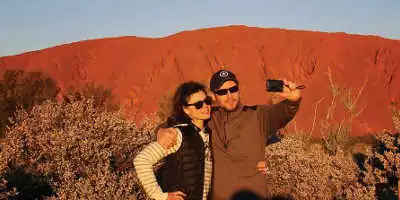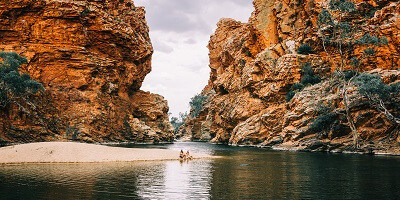
Why you shouldn’t climb Uluru
Written by: Cameron Ward
Published: 03/01/2019
Reading time: 3 mins
Uluru is undoubtedly one of Australia’s most recognisable landmarks. Its striking orange tone creates an outstanding look in the harsh, desert land.
With millions of visitors travelling every year to see this spectacular site in person. A large portion of these travellers with make the climb up to the top, getting to see the stunning landscape of the outback from above. However, despite the great photos, you may get up the top, climbing up Uluru should no longer be an option.
-
You will disrespect the owners
You wouldn’t climb a church, would you? This is the exact same, as Uluru is a sacred site for the Traditional owners of the land, the Anangu People. These indigenous people of Australia have been around for at least 60, 000 years, and over that time have formed a deep connection with this red rock. The Anangu people see Uluru as a sacred site, a resting place for past spirits and ancestors, transforming it to a mere landmark into one of the most important cultural and historical sites in Australia. They continually use it as a place for traditional ceremonies and rites of passage, with the traditional owners looking after both Uluru and its surrounds.
The Anangu people have continually stated how they wish tourists would not climb Uluru, as it brings them deep sadness and offence when done. Therefore, visitors should recognise what is the right thing to do to respect the traditional owners, and understand that climbing the rock is wrong.
-
It destroys the environment
Even despite the Anangu people’s wish, thousands of tourists continue to climb the rock. This causes millions of footprints to trek up the climbing path. Causing the area to slowly become eroded, changing the complete face of Uluru. Climbers have used the rock as both a rubbish bin and a bathroom, throwing trash on the rock during their climb as well as using it as a toilet when human nature calls. When rainfall comes the water washes away the secretion and waste, sweeping it all into the nearby river and watering holes, which poisons the waters and kills many plants and animals.
-
It’s Dangerous to climb
If the idea of the above factors have not deterred you, then perhaps the threat of your life might? Although it may look like a smooth and easy climb, there has been countless injuries and 37 deaths since the 1950s. With the most recent death in 2018 when a 76-year-old Japanese man fell to his death. This saddens the traditional owners of Uluru even further, with the owners stating, “We feel great sadness when a person dies or is hurt on our land…Our traditional law teaches us the proper way to behave.”
-
It’s officially closing in October 2019
Despite all these reasons against climbing, numerous groups continue to climb every day. This will soon be banned, with the Uluru-Kata Tjuta National Park Board of Management deciding to close the climb on the 26th of October 2019. Even with this restriction, there will be plenty of ways to see Uluru in person. By circling around the base, seeing it above in a helicopter, or marvelling it from afar from the numerous lookouts.









